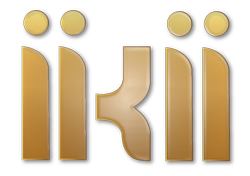Research Article
An Exploration on Self-Made Teaching Aids for Learning Areas in Taiwanese Preschools
More Detail
1 Dev Samaj College of Education for Women Ferozepur2 Center of Teacher Education, Minghsin University of Science and Technology3 Chaoyang University of Technology4 Childhood Education and Care, Minghsin University of Science and Technology* Corresponding Author
International Journal of Social Sciences and Artistic Innovations, 4(3), September 2024, 0005, https://doi.org/10.35745/ijssai2024v04.03.0005
Published: 23 October 2024
OPEN ACCESS 115 Views 71 Downloads
ABSTRACT
The use of self-made teaching aids in preschools offers numerous benefits, including enhanced engagement, creativity, and differentiated instruction. By leveraging readily available materials, preschool educators can create customized and cost-effective resources that support the diverse learning needs of young children. Grounded in established educational theories, self-made teaching aids contribute to a developmentally appropriate and enriching learning environment for preschoolers. However, the learning aera is a curriculum model for Taiwanese preschools, and implement the learning aera approach. Therefore, this article aims to explore self-made teaching aids for learning areas in Taiwanese preschools, and provide recommendations from the perspectives of training programs and resource sharing. Training programs can foster a more engaging and tailored learning environment for young children in early childhood education settings. By developing these platforms of resource sharing, educators can leverage collective wisdom and creativity to continually innovate in their teaching practices, ultimately benefiting the learning experiences of young children in early childhood education. It is hoped that such an exploration can benefit the learning of young children, and enhance the quality of earlyhood education in Taiwan.
CITATION (APA)
Kaur, K., Shih, Y. H., Liu, Y.-Y., Hsu, M. C., & Chang, C. L. (2024). An Exploration on Self-Made Teaching Aids for Learning Areas in Taiwanese Preschools. International Journal of Social Sciences and Artistic Innovations, 4(3), 0005. https://doi.org/10.35745/ijssai2024v04.03.0005
REFERENCES
- Bautista, A., Ng, SC., Múñez, D. et al. (2016). Learning areas for holistic education: kindergarten teachers’ curriculum priorities, professional development needs, and beliefs. International Journal of Child Care and Education Policy, 10, 8. https://doi.org/10.1186/s40723-016-0024-4
- Crawford, P.A., Roberts, S.K. & Lacina, J. (2024). Picturebooks and young children: Potential, power, and practices. Early Childhood Educ. J. 52, 1273–1279. https://doi.org/10.1007/s10643-024-01701-0
- Hedegaard, M. (2020). Children’s exploration as a key in children’s play and learning activity in social and cultural formation. In: Hedegaard, M., Eriksen Ødegaard, E. (eds) Children’s exploration and cultural formation. International perspectives on early childhood education and development(pp.11-28). Berlin/Heidelberg, Germany: Springer, Cham. https://doi.org/10.1007/978-3-030-36271-3_2
- National Association for the Education of Young Children (NAEYC). (2020). Developmentally appropriate practice: A position statement of the NAEYC. Available online: https://www.naeyc.org/resources/position-statements/dap/contents, (accessed on June 6, 2024)
- Piaget, J. (1964). Part I: Cognitive Development in Children: Piaget Development and Learning. Journal of Research in Science Teaching, 2(3), 176–186.
- Shih, Y. H., Wu, C. C., & Chung, C. F. (2022). Implementing intergenerational learning in a preschool: A case study from Taiwan. Educational Gerontology, 48(12), 565–585. DOI: 10.1080/03601277.2022.2053035
- Vygotsky, L. S. (1978). Mind in Society: The Development of Higher Psychological Processes. Cambridge, Massachusetts: Harvard University Press.
- Ydo, Y. (2022). Building stronger foundations for learning: The key for effective curriculum implementation and lifelong learning. Prospects, 52, 1–5. https://doi.org/10.1007/s11125-022-09618-5


 The articles published in this journal are licensed under the CC-BY Creative Commons Attribution International License.
The articles published in this journal are licensed under the CC-BY Creative Commons Attribution International License.